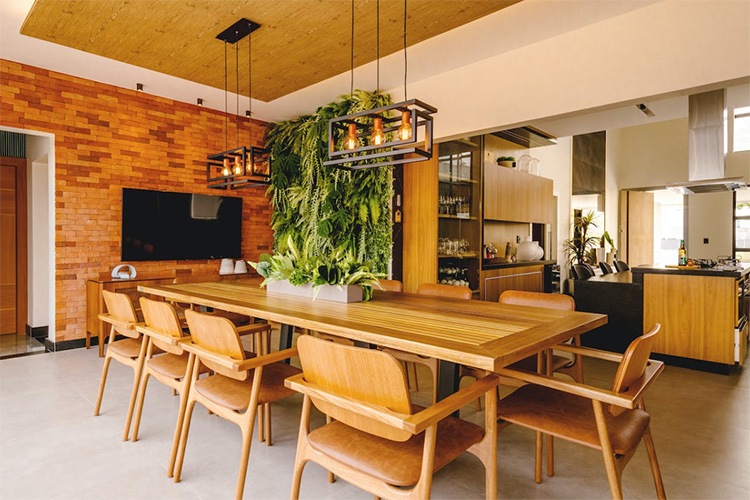
As we step into 2024, the world of interior design is embracing a significant shift towards sustainability, shaping a trend we call ‘eco-elegance’. This movement is particularly noticeable in kitchen designs, where wood worktops stand out not just for their environmental benefits but also for their aesthetic appeal and durability.
This article aims to explore the top sustainable interior design trends for 2024, focusing on how they blend functionality, beauty, and a commitment to the environment.
The Timeless Charm of Wood Worktops: Balancing Durability and Sustainability
Wood worktops, especially oak, are a cornerstone of sustainable interior design, offering a perfect blend of durability and environmental friendliness. In 2024, the focus is on using sustainably sourced wood, ensuring that these worktops are not only long-lasting but also have a minimal environmental footprint. The beauty of wood worktops lies in their natural grain patterns, which bring warmth and character to any kitchen.
Oak worktops, in particular, are renowned for their strength and resilience. This type of wood can be easily repaired and refinished, extending its life and reducing the need for replacement. This characteristic underscores a key principle of sustainable living: valuing longevity over disposability.
Embracing the Past: The Rise of Vintage and Second-Hand Furniture in Sustainable Design
2024 sees a resurgence in the popularity of vintage and second-hand furniture, marking a shift towards more sustainable and characterful interior choices. By reusing and repurposing furniture, we reduce waste and lower the demand for new resources. Vintage pieces bring a unique charm and story to modern interiors, creating spaces that are both stylish and environmentally conscious. This trend is not just about aesthetics; it’s a reflection of a deeper commitment to sustainability and a more circular economy in the interior design industry. Incorporating vintage items into contemporary designs is a testament to the timelessness and adaptability of good craftsmanship.
Designing with Nature: Biophilic Trends in 2024
Biophilic design, which integrates elements of nature into interior spaces, is becoming increasingly popular in 2024. This approach not only enhances the aesthetic appeal of a space but also contributes to the well-being of its occupants. Incorporating natural light, plants, and materials like wood and stone helps create a calming and rejuvenating environment. Biophilic design is a testament to the idea that sustainability can be achieved by harmonizing our living spaces with the natural world, proving that eco-friendly choices can also enhance our quality of life.
Sustainability Meets Technology: Smart Kitchens of the Future
The kitchen of 2024 is not just about stylish design and sustainable materials; it’s also about embracing smart technology. Energy-efficient appliances, smart lighting systems, and waste-reducing tools are becoming integral parts of the sustainable kitchen. These technologies help reduce the environmental impact of our daily routines, making sustainability an effortless part of life. Smart kitchens represent the perfect marriage of technology and eco-friendly design, leading the way in sustainable living practices.
Colour and Texture: Eco-Friendly Aesthetics in Interior Design
In 2024, the use of colour and texture in sustainable interior design is about more than just visual appeal; it’s about making eco-friendly choices. Natural dyes, recycled fabrics, and sustainable materials are being used to create rich, tactile experiences in interior spaces. These elements bring depth and character to eco-friendly designs, proving that sustainability does not mean compromising on style.
This approach to colour and texture shows a growing recognition that every aspect of interior design, from the materials we choose to the hues we prefer, plays a role in shaping a more sustainable future.
Conclusion
The trends of 2024 reflect a growing awareness of the importance of sustainability in interior design. From the enduring appeal of wood worktops to the innovative use of technology in kitchens, these trends demonstrate that eco-friendly choices can be both beautiful and functional. The rise of vintage and second-hand furniture, along with the incorporation of biophilic elements, shows a shift towards more thoughtful and environmentally responsible design practices. As we continue to embrace these trends, we pave the way for a future where interior design is not just about creating attractive spaces, but also about fostering a more sustainable and harmonious relationship with our environment.

Leave a Reply